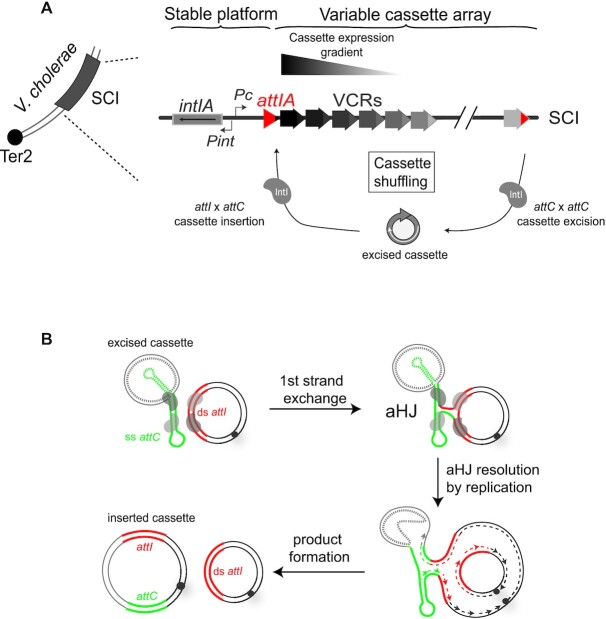Figure 1.
The integron. (A) The integron system in Vibrio cholerae. V. cholerae sedentary chromosomal integron is located on the second chromosome close to the termination site, Ter2. The four components of the integron stable platform are shown: the integrase expressing gene, intIA, the two promoters, PC and Pint and the attIA recombination site (red triangle). The variable cassette array contains a large number of cassettes, which are represented by small arrows. Their expression level is reflected by the colour intensity of each arrow. Only the first cassettes of the array are expressed, and the subsequent ones can be seen as a low-cost cassette reservoir. Upon expression of the integrase (grey forms) cassette shuffling can occur through cassette excision (attC × attC) and integration in the first position in the array (attIA × attC). (B) Integron cassette insertion in an attI site. Recombination between the double-stranded attI site (bold red lines) and a single-stranded bottom attC site (green lines) ending a cassette is shown. Since we do not exactly know the nature of the cassettes (ss or ds), the top strand of the attC site is represented as a dotted line. The synaptic complex comprises both att sites bound by four integrase monomers (grey ovals). One strand from each att site is cleaved and transferred to form an atypical Holliday junction (aHJ). aHJ resolution implies a replication step. The origin of replication is represented by a grey circle and the newly synthesized leading and lagging strands by dashed lines. Both products are represented: the initial substrate resulting from the top strand replication, and the reactional product containing the inserted cassette and resulting from the bottom strand replication.

